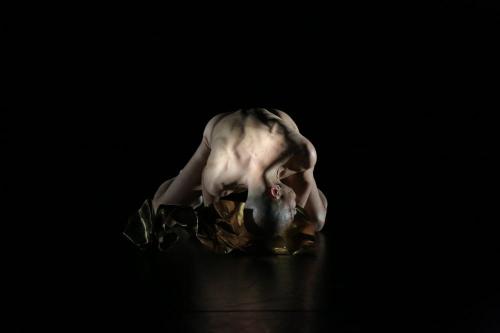Where is Kō? is a new online bilingual archive of the dance work of the late Kō Murobushi, going back to 1969. This unprecedented, lucid digital archive will likely prove a vital resource for researchers, students and fans of the butohka, who passed away suddenly last year.
Directed by Kimiko Watanabe, the archive encompasses text, visual media (photographs, video, graphics) and audio recordings. These are arranged chronologically by Murobushi’s oeuvre, each carefully listed with vital information, descriptions and statements with photographs, flyers and posters. An alternative portal is the gallery section, which organises video and image content by category (interview, performance, workshop, radio, etc). There are also countless examples of printed materials, such as Murobushi’s own writings and criticism in various languages. The Japanese texts are available in full or partial English translation, though some are still pending. There are even scans of original press notices, articles and other materials, such as notes handwritten by Murobushi, as well as a complete catalogue of his vast book collection that reveals his wide-ranging interests. The organisers also have longer versions of videos available for researchers upon request.

The archive (produced with a grant from Arts Council Tokyo) runs in tandem with a physical space, Shy, which is an “archive cafe” in Shinjuku. Open since March 2016, the space is dedicated to books and materials about Kō Murobushi (or Kō, as he is often called). It also hosts study sessions for Japanese and international researchers.
While not quite as famous overseas as Tatsumi Hijikata and Kazuo Ohno, Kō Murobushi (1947-2015) was a pioneering Butoh dancer. He had an early attraction to Shugendō and practised as a yamabushi mountain ascetic for some time. He studied under Hijikata in the 1960s and then co-founded Dairakudakan in 1972 with Akaji Maro. He later founded an all-female troupe called Ariadone as well as a Butoh magazine called Hageshii Kisetsu (La saison violente), and further dance units Butoh-Ha Sebi, Kō Murobushi Company and Ko & Edge Co. In 1978 he staged Butoh in Paris, which is regarded as one of the key events responsible for launching the international recognition the movement now enjoys. His work regularly toured Europe and the Americas.
Butoh archiving is a major issue right now in the performing arts world in Japan. The Hijikata Tatsumi Archive was established in 1998 at Keio University Art Center and continues to play a central role in Butoh academic studies and dissemination. Meanwhile, the work of Kazuo Ohno lives on through the Dance Archive Project, which creates new work based on the archive of the great dancer along with collecting documentation. Takao Kawaguchi also has an ongoing side project re-enacting Ohno’s most famous dance works.
Where is Kō? Kō Murobushi Archive, 1947-2015
http://www.ko-murobushi.com/
